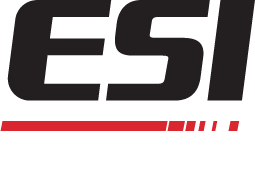EB Vs. Uv Penetration - EB Curable Technology
EB vs. UV: Penetration
Electron beam and ultraviolet curing technologies are both advanced, environmentally friendly, and are more effective methods for curing inks, laminating adhesives, and coatings than solvent or water based technologies. However, the two are very distinct methods, and sometimes one will be better suited for different applications than the other will. One factor that separates the two technologies is material penetration, and to help you choose the technology that’s best for you, today we will discuss how Electron Beam and UV curing differ in terms of material penetration, and how they perform in different situations.
The Different Processes of Material Penetration
EB and UV technologies both require effective exposure to cure properly, and when the numbers are converted to compare the two processes, both technologies use roughly the same amount of energy. The major difference between the two is that electron beam curing (EB Curable Technology) uses the energy created by electrons to penetrate material and cure inks; meanwhile, ultraviolet curing relies on the energy created when an external source such as a photoinitiator absorbs UV light and interacts with its photons. As such, the ability of ebeam to cure properly is affected by the mass density and thickness of a material, and UV is affected by optical density. In both cases, the deeper the photons or electrons can penetrate, the more effective they’ll be.
When to Use EB Curing
With EB curing, the weight of the material is what matters, and this is determined by a material’s mass density and thickness. The EB Curable Technology process works best with lower density materials because the electrons have an easier time penetrating. Since penetration is not affected by the pigment or opacity of the substrate, electron beam curing is an ideal process for:
Polyolefin films and paper
High opacity ink layers that are metallic, black, or white
Films that are white, reverse printed, or metalized
Laminating adhesive layers
Metal foil and other high-density materials, however, do not allow the electrons to penetrate properly and are not well suited to the EB curing process.
When Is UV Curing Most Suitable?
Materials that are clear have a low optical density and are called optically thin. Since the photons can easily pass through materials that are optically thin, these materials are ideal for UV curing. They include films, overprint coatings, and even materials where part of the spectrum is blocked by a polyester film or other clear layer (in these instances, the correct photoinitiator package is necessary). UV curing can also be used on pigmented inks when there’s a low pigment loading and ink thickness.
The ultraviolet process is not suitable for optically thick pigmented materials that have a high optical density. This means UV curing is not ideal for:
Printed ink
Heavy black ink
Metallic ink
Controlling Penetration
Both EB and UV curing allow for a certain degree of control over energy penetration, but the process for each is different. EB penetration can be controlled by manipulating the voltage on the equipment; a low voltage works best for printing and packaging coatings, inks, and films. UV penetration can be controlled with the lamp’s peak irradiance. With a high powered and focused lamp, you can use the UV process to cure materials with a higher optical density.
By choosing the process that’s best suited for the level of penetration you need, you’ll produce higher quality products and increase customer satisfaction. If you are ready to discuss how electron beam technology can help your business reduce costs and increase efficiencies, please feel free to contact us.


